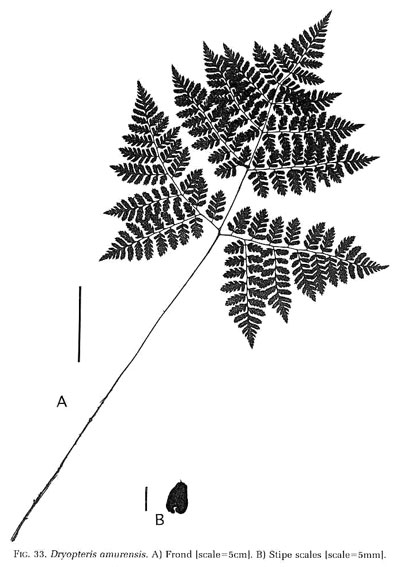| Dryopteris amurensis | ||
|
Etymology
Amurensis refers to the area of the Amur River, which is the boundry between Manchuria and Russia.
Description
Rhizome: short-creeping, scales.
Frond: 50 cm high by 20 cm wide, evergreen, monomorphic, blade/stipe ratio: 2:3. Stipe: grooved, darker base, scales sparse, ovate, long, pale brown, vascular bundles: 3-7 in a c-shaped pattern. Blade: 3-pinnate at base, pentagonal, membranous, small bullate scales on underside. Pinnae: anadromous, the lowest pinnae almost the size of the remainder of the blade; pinnules basiscopic pinnule of lowest pinnae very long; costae grooved above, continuous from rachis to costae; segments oblong-ovate; margins pinnately incised or lobed, soft-spiny; veins free, forked. Sori: round, medial on lobes, on upper half of lower veinlets, indusium: reniform, at a sinus, sporangia: brownish. Culture
Habitat: on humus-rich floor of dense mountain, coniferous forests often in subalpine zone.
Distribution: eastern Siberia, northeastern China, Japan, Korea.
Hardy to -30�C, USDA Zone 4.
Synonyms
Aspidium spinulosum var. amurense Milde Leptorumohra amurensis (Christ) Tzvelev Nephrodium amurense B. Fedtschenko |
|
|
